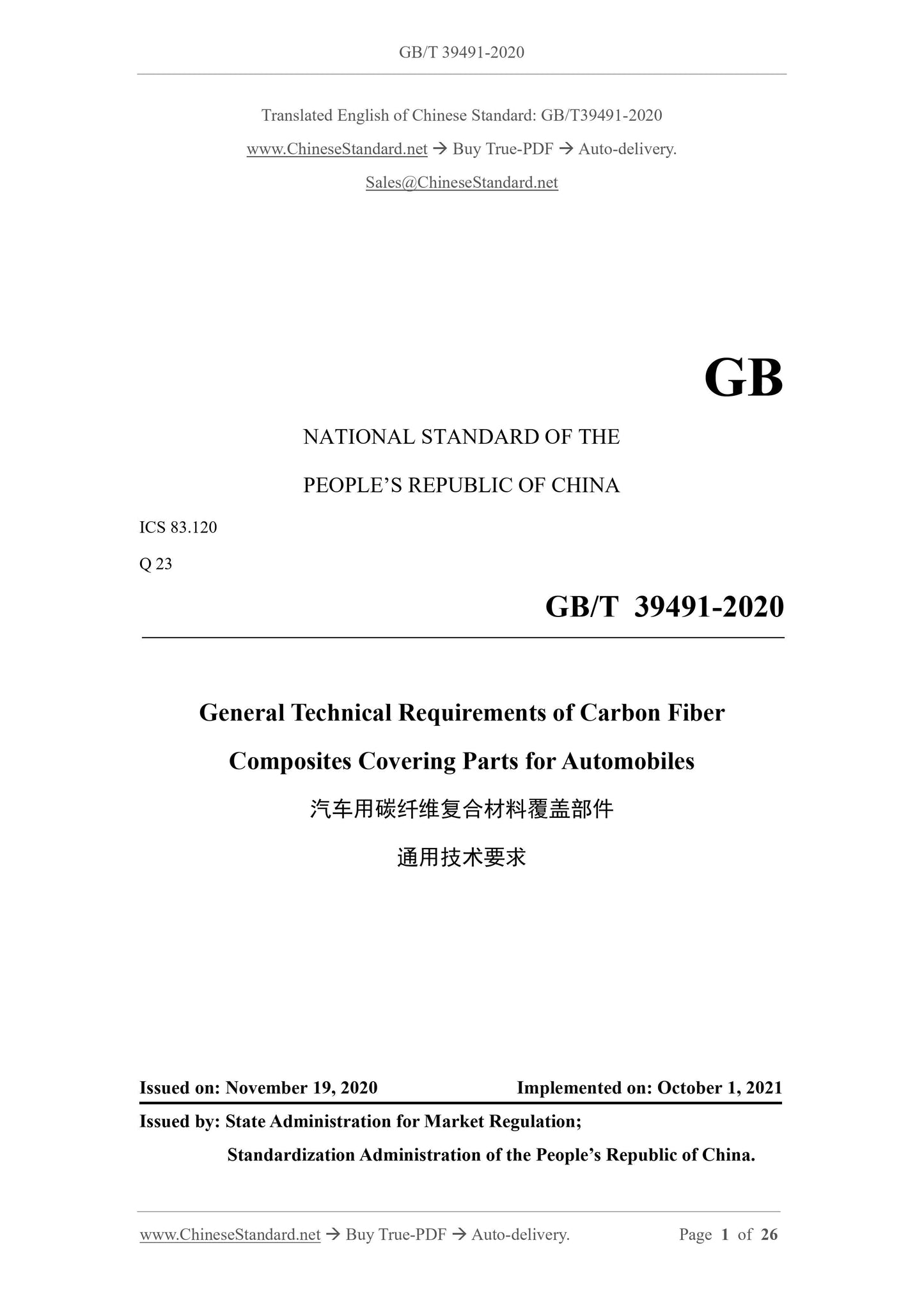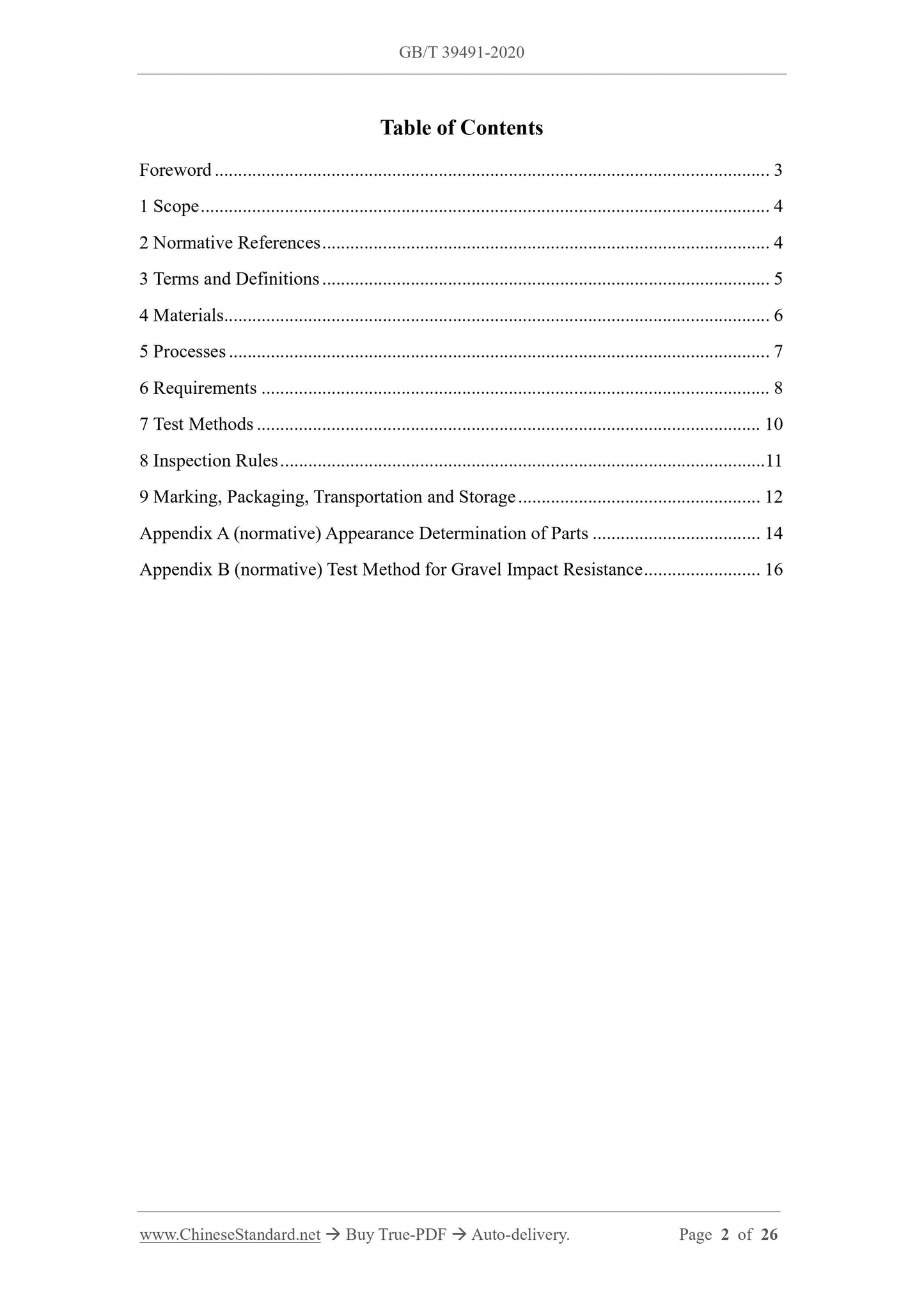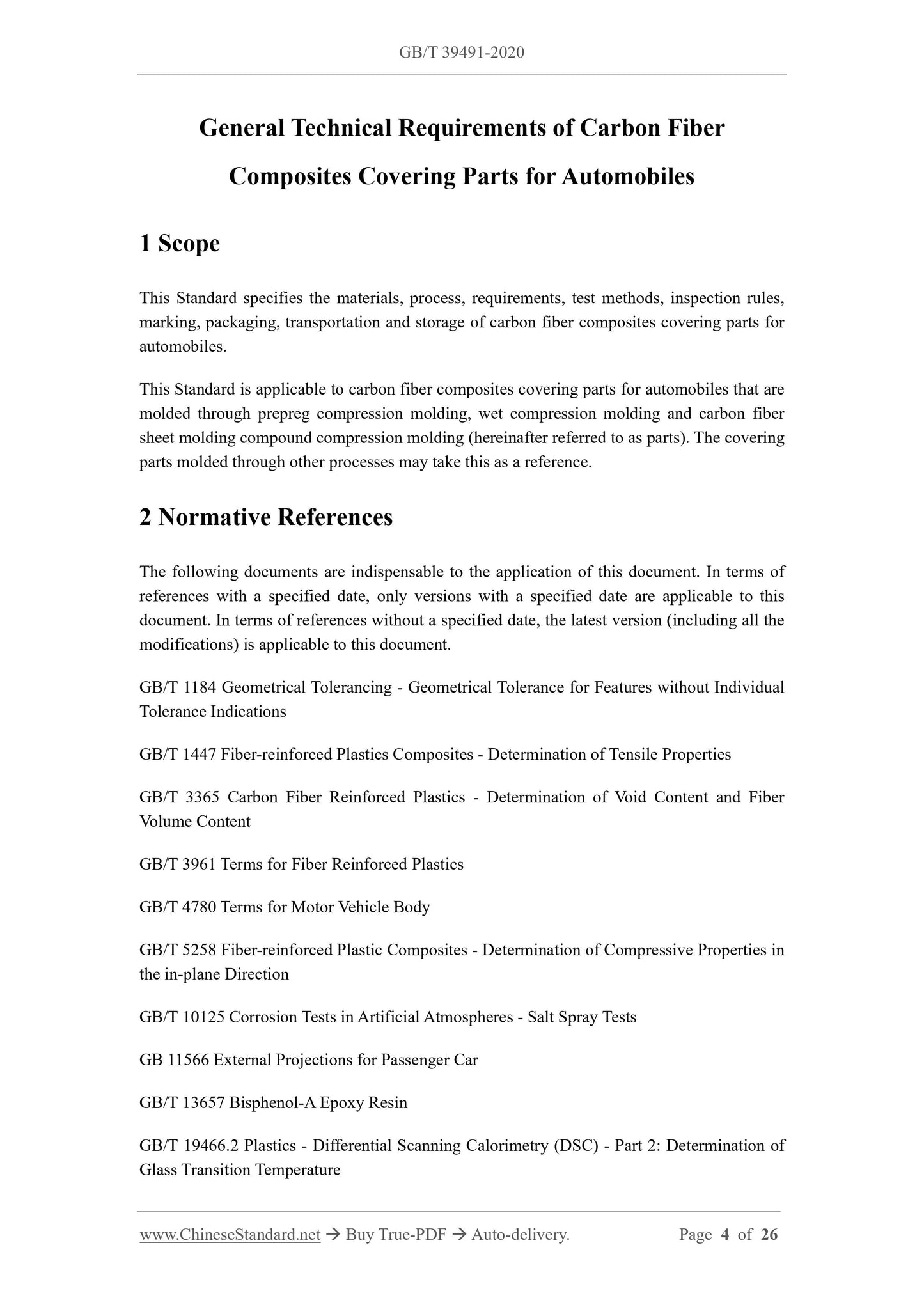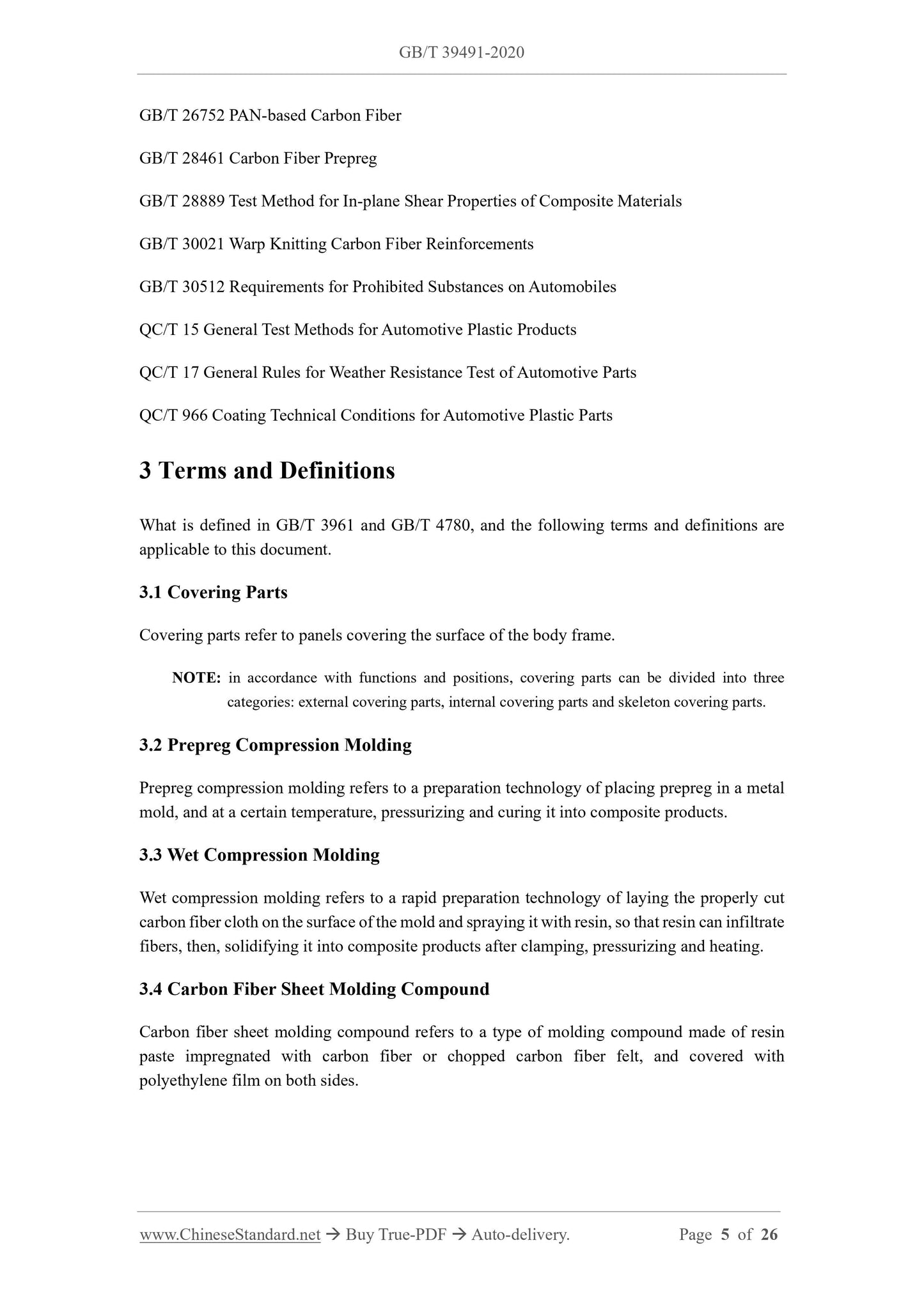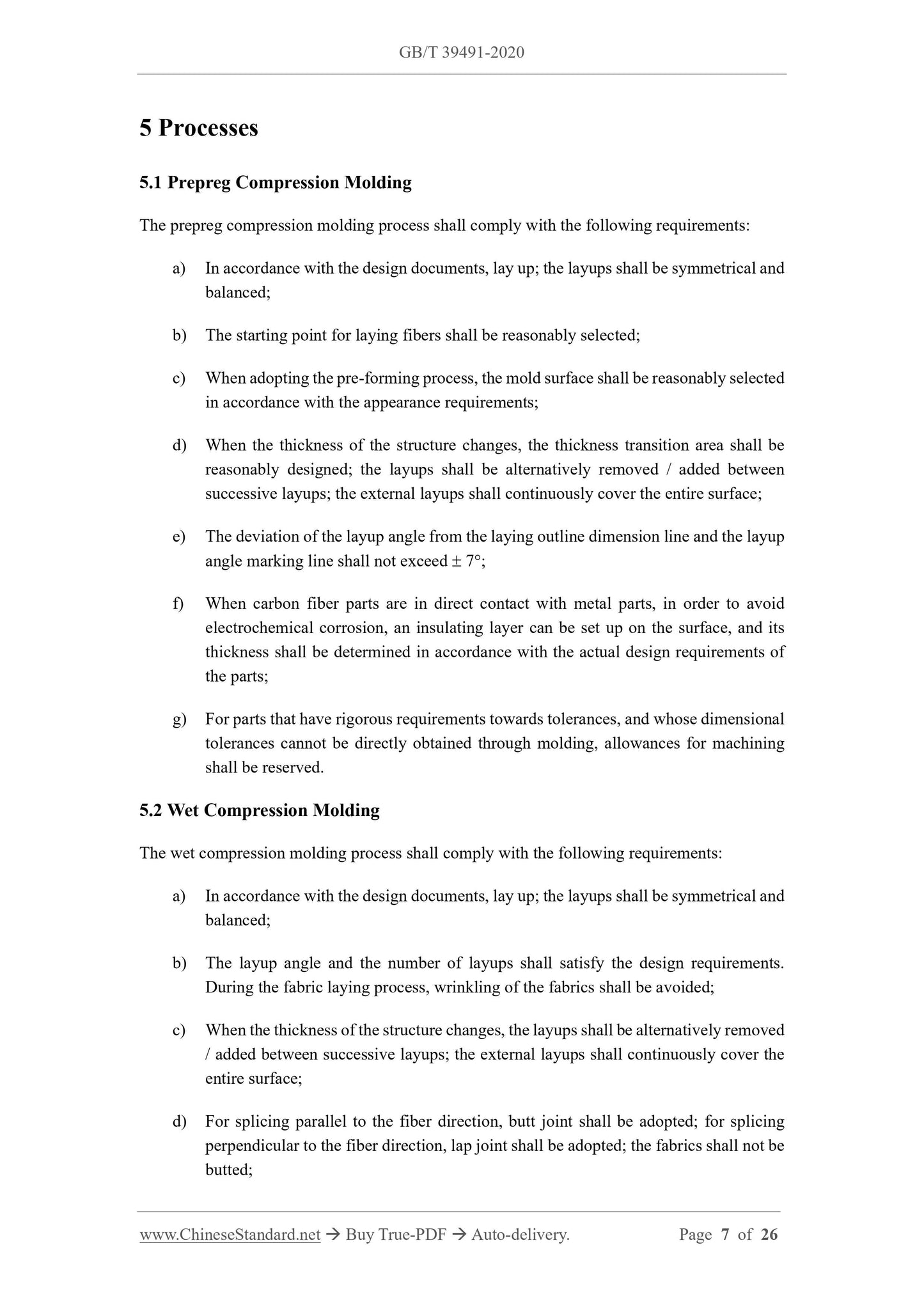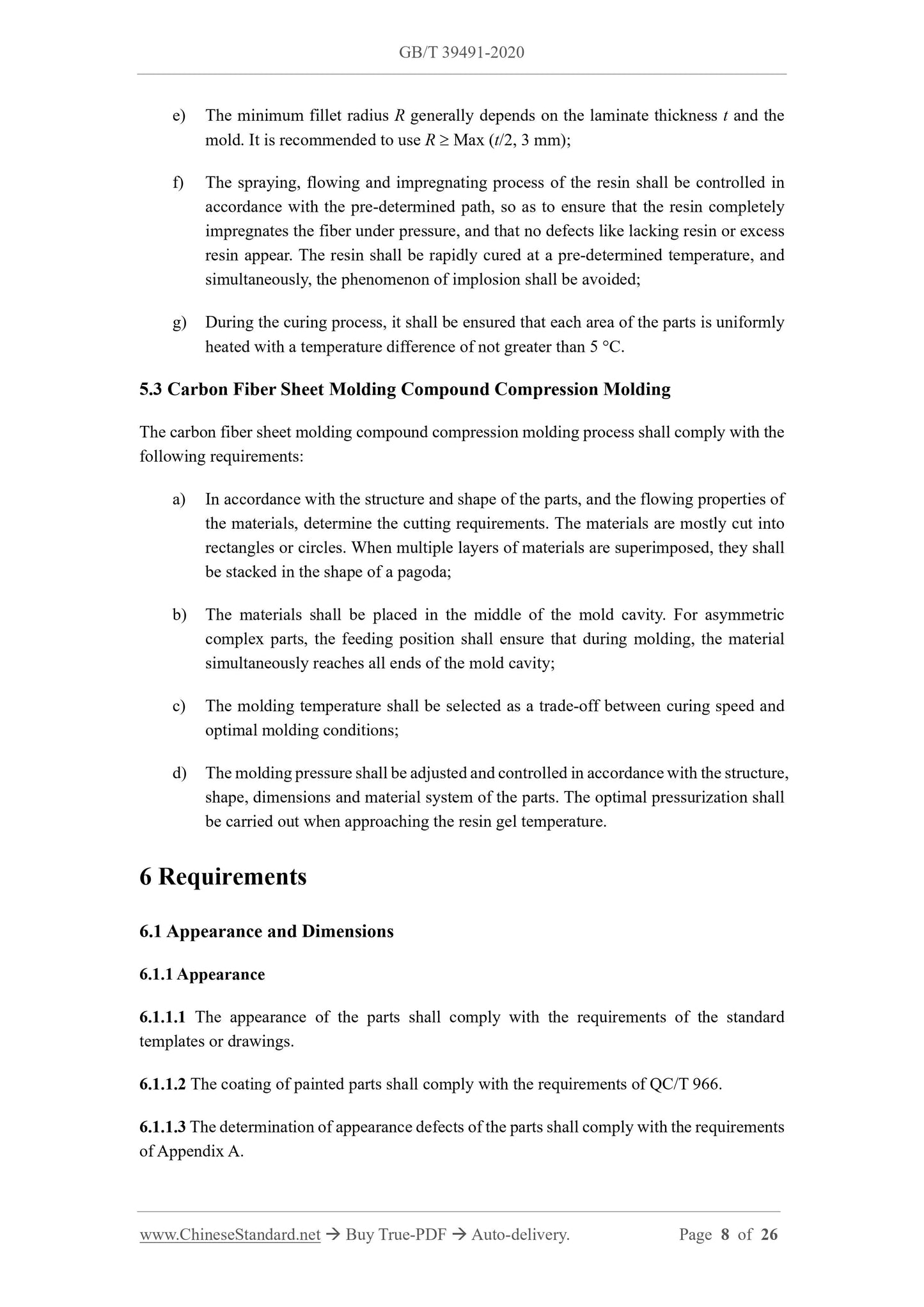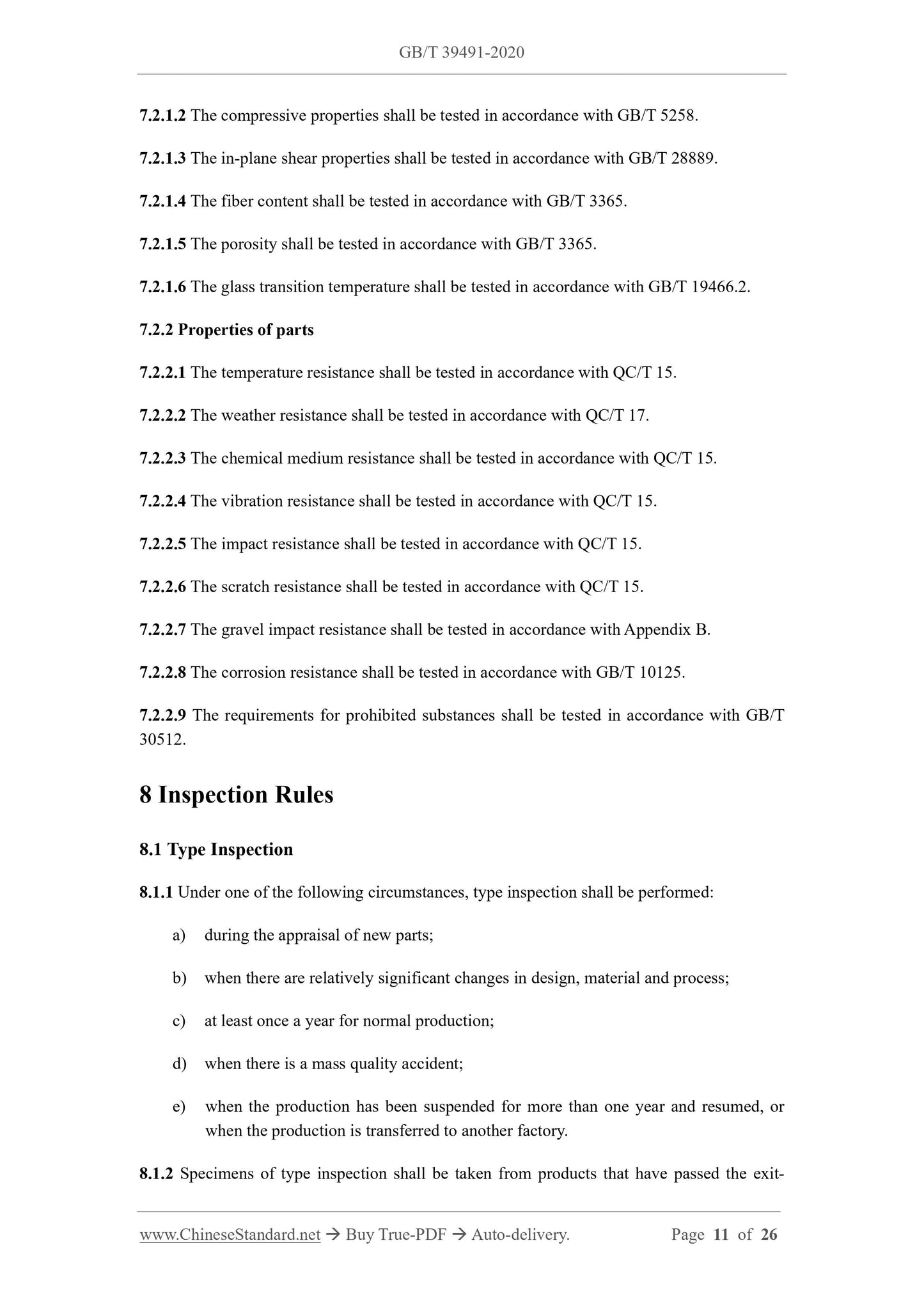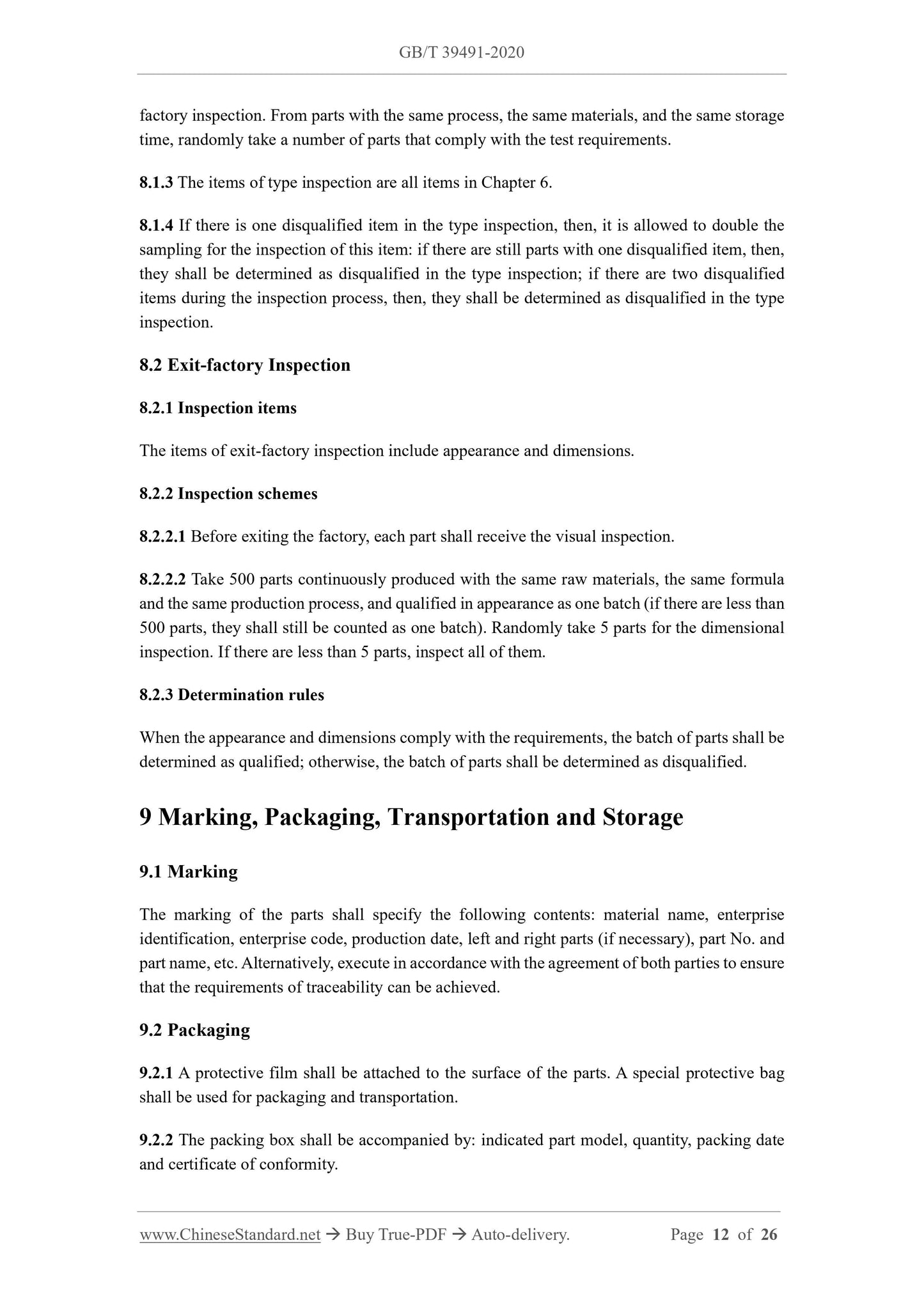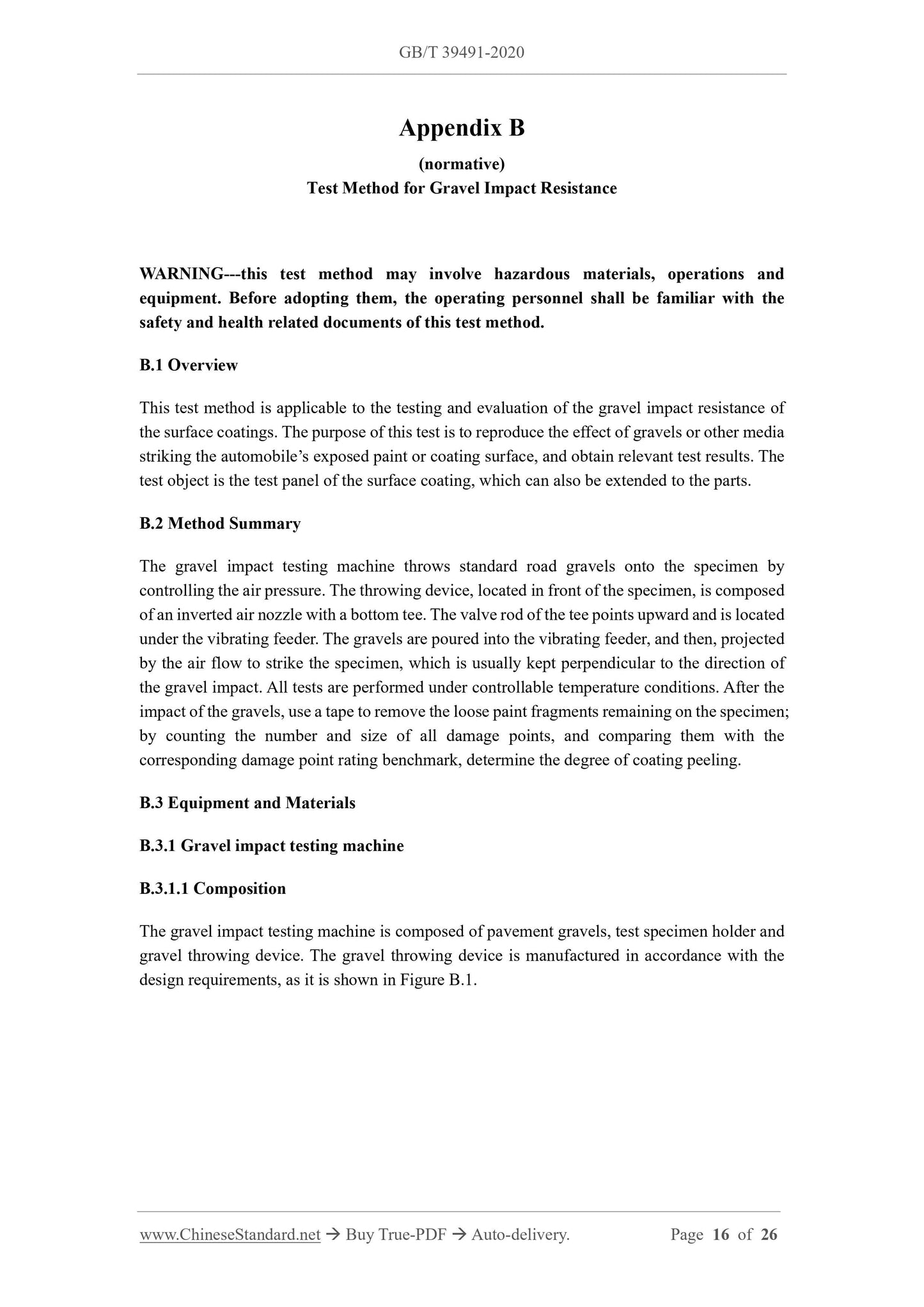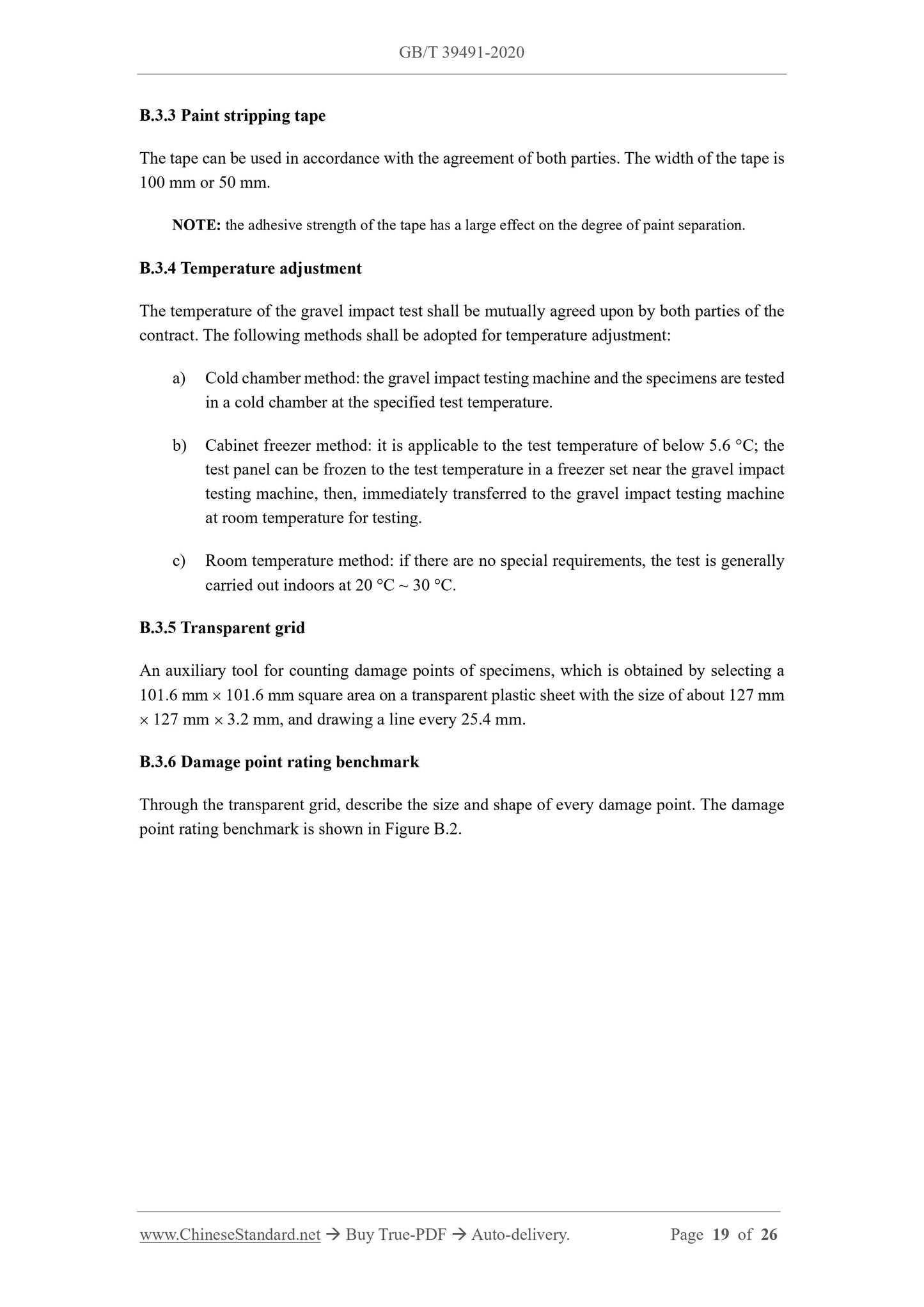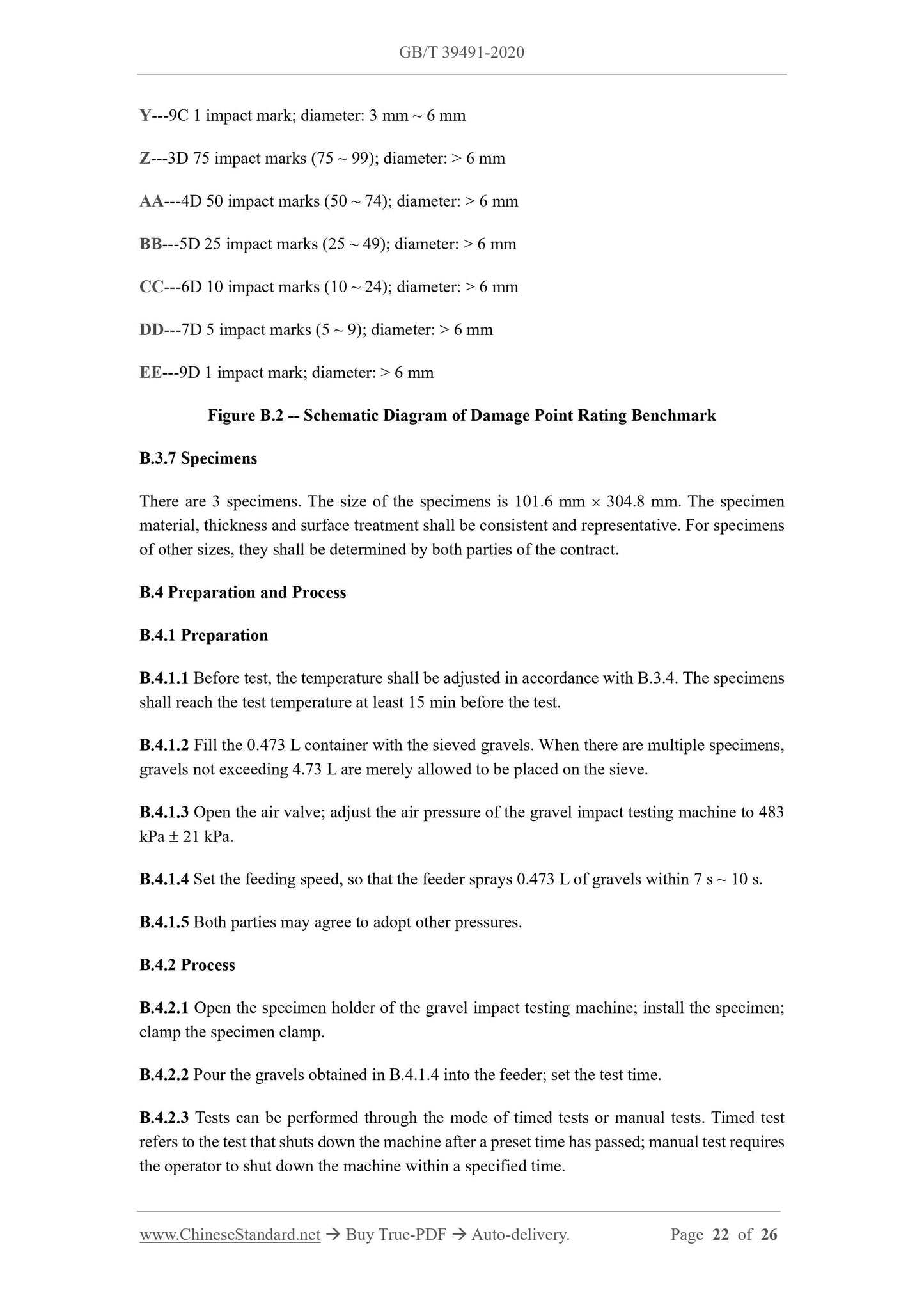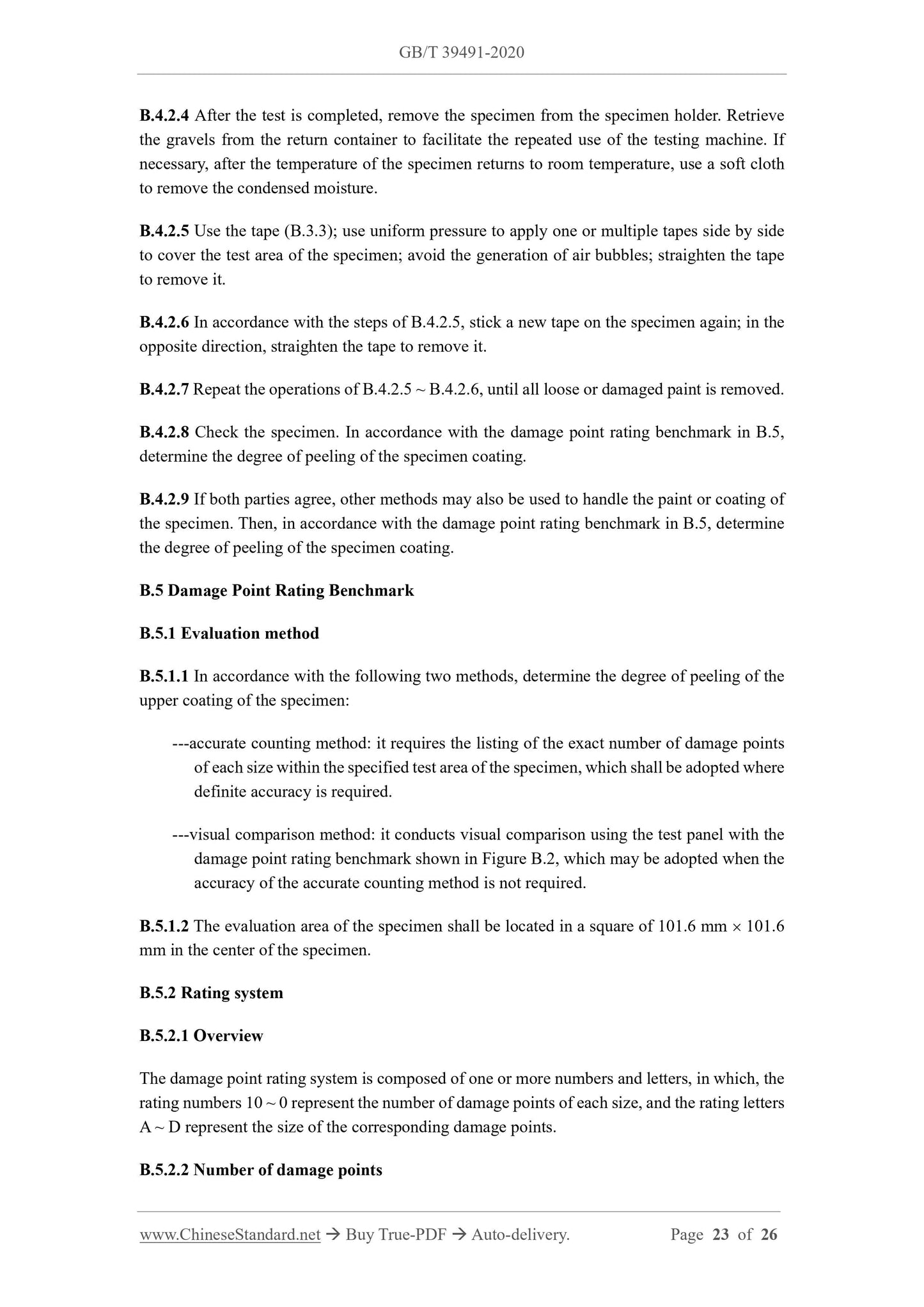1
/
of
12
www.ChineseStandard.us -- Field Test Asia Pte. Ltd.
GB/T 39491-2020 English PDF (GB/T39491-2020)
GB/T 39491-2020 English PDF (GB/T39491-2020)
Regular price
$260.00
Regular price
Sale price
$260.00
Unit price
/
per
Shipping calculated at checkout.
Couldn't load pickup availability
GB/T 39491-2020: General technical requirements of carbon fiber composites covering parts for automobiles
Delivery: 9 seconds. Download (and Email) true-PDF + Invoice.Get Quotation: Click GB/T 39491-2020 (Self-service in 1-minute)
Newer / historical versions: GB/T 39491-2020
Preview True-PDF
Scope
This Standard specifies the materials, process, requirements, test methods, inspection rules,marking, packaging, transportation and storage of carbon fiber composites covering parts for
automobiles.
This Standard is applicable to carbon fiber composites covering parts for automobiles that are
molded through prepreg compression molding, wet compression molding and carbon fiber
sheet molding compound compression molding (hereinafter referred to as parts). The covering
parts molded through other processes may take this as a reference.
Basic Data
| Standard ID | GB/T 39491-2020 (GB/T39491-2020) |
| Description (Translated English) | General technical requirements of carbon fiber composites covering parts for automobiles |
| Sector / Industry | National Standard (Recommended) |
| Classification of Chinese Standard | Q23 |
| Word Count Estimation | 17,134 |
| Date of Issue | 2020-11-19 |
| Date of Implementation | 2021-10-01 |
| Regulation (derived from) | National Standard Announcement No. 26 of 2020 |
| Issuing agency(ies) | State Administration for Market Regulation, China National Standardization Administration |
Share
